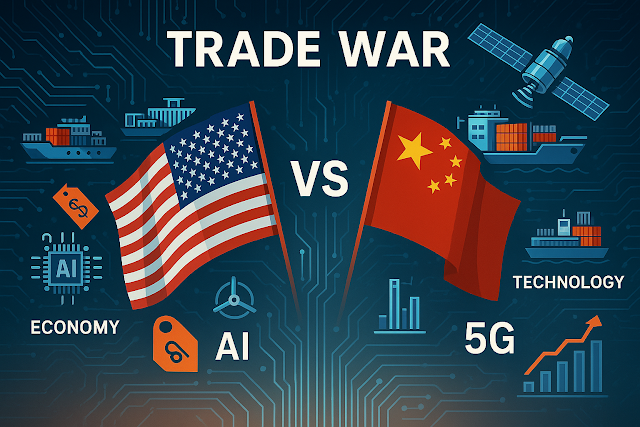Introduction
The U.S.–China trade war didn’t start overnight. It started in 2018 when the U.S. put tariffs on various Chinese imports due to growing trade imbalances, intellectual property theft, and national security risks. China retaliated with its tariffs, and what followed was a long period of economic and political tensions that are still affecting global markets today.
U.S.–China trade tensions aren’t just about money-they’re also about controlling emerging technologies, data privacy, and geopolitical influence. So stay informed as this unfolds.
Recent Escalations (2024–2025)
Let’s get up to speed. In late 2024 and early 2025, the U.S. added new tariffs on Chinese goods, particularly in the tech and green energy sectors. U.S.–China tariffs: what’s new? Semiconductors, electric vehicle batteries, and solar technology components are in the crosshairs.
China responded with its own set of tariffs on American agricultural exports and rare earth minerals. These new measures have reignited trade war concerns, and prices are rising, straining supply chains. This is especially tough on industries like consumer electronics, EV manufacturing, and farming-sectors that are already feeling the pinch from the 2023 U.S.–China trade war.
Technology & National Security Concerns
Technology is the most volatile front of the trade war. The U.S. has upped the ante and further restricted exports of advanced chips and software to Chinese companies like Huawei and ByteDance (the parent company of TikTok). Why? National security.
China is responding by accelerating its push for self-reliance. It’s investing big in domestic chip production, AI research, and 5G infrastructure to reduce its dependence on American technology. The semiconductor dispute shows how deeply the trade war has penetrated critical supply chains and how long the impact of the 2023 U.S.–China trade war will last on global tech innovation.
Diplomatic Engagements and Setbacks
Despite multiple high-level meetings since 2023, nothing has changed. Recent summits have shown just how far apart the U.S. and China are on issues like data privacy, market access, and military use of civilian technology. Despite multiple attempts to resolve, U.S.–China trade relations are getting worse. A recent example is the failed WTO mediation, which has further eroded trust and transparency between the two.
Economic Impact on Both Countries
The US-China trade war has big consequences. Due to tariffs, US businesses are paying more for raw materials and components, and American consumers are paying more for smartphones, cars, and groceries.
China is seeing slower export growth and rising unemployment in manufacturing sectors. To counter this, it’s expanding trade with BRICS, ASEAN, and the Belt and Road Initiative to reduce dependence on US markets.
Global Ripple Effects
It’s not just the US and China. The conflict has disrupted global inflation trends, changed import/export routes, and caused currency volatility in several emerging markets. Many countries are now exploring new alliances or diversifying trade partnerships.
An overview of US-China trade policies shows they have impacted everything from global semiconductor supplies to food security. India and Vietnam are attracting foreign investment that would have otherwise gone to China.
What’s Next? Possible Scenarios
What’s to come? There are several possibilities. In an ideal world, both countries would make new US-China trade agreements to ease tensions and restore some economic stability. But decoupling also seems likely, especially with more companies adopting the “China+1” strategy to reduce dependence on Chinese manufacturing.
Another wild card is politics. With elections coming up in both countries, leadership changes could shift diplomatic priorities or harden existing positions. Either way, the long-term consequences of the US-China trade war will play out for years to come.
Conclusion
In short, the US-China trade war is far from over. From changing trade policies and tech nationalism to global supply chain disruptions, it’s a complex and evolving issue with no simple answer.
So stay informed: US-China trade war updates are not just about tariffs; they’re about the future of international economics, innovation, and diplomacy. For businesses and individuals alike, adapt and be vigilant.
FAQs
**Q1: What triggered the US-China trade war?
** 2018: trade imbalances, forced tech transfers, and US national security.
**Q2: Who’s most affected by the current tariffs?
** Electronics, farming, and automotive.
**Q3: Will it end soon?
** Diplomacy is ongoing, but US-China trade talks are stuck.
**Q4: What can I do?
** Be flexible: follow policy changes, check US-China trade war updates, and diversify.



0 Comments